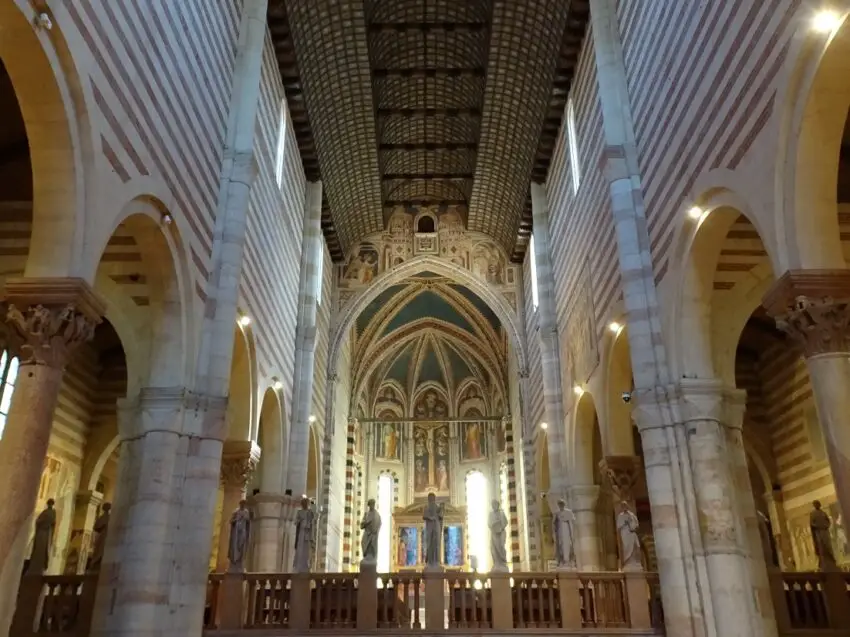While northern Italy’s Verona draws its fair share of visitors due to the fact that it’s the setting of Romeo and Juliet, there are plenty more reasons to hang around here after following in the footsteps of the star-crossed lovers.
Apart from some fascinating remains from the times of the Roman Empire, the city features a medieval core, which is wonderfully preserved and has been designated a UNESCO World Heritage Site in its entirety in 2000.
Besides some impressive palazzos and government buildings, it’s mainly the city’s many churches that pack a serious architectural and artistic punch. As there are quite a few of these spread over the city centre, I decided to compile a list of the four most impressive and unique ones, which shouldn’t be left out of your itinerary. Here are my top 4 churches in Verona.
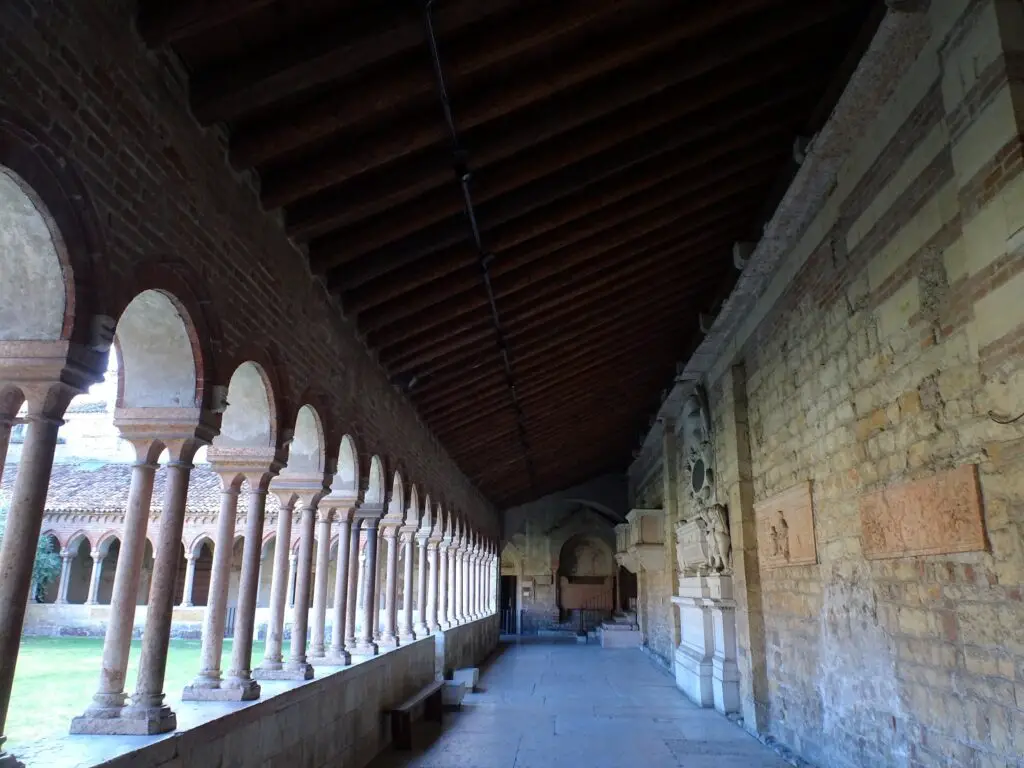
This post may contain affiliate links and I might earn a small commission at no additional cost to you. For more info click here.
The 4 Must-See Churches of Verona, Italy
San Fermo Maggiore
For me this is the most impressive church in the city, which is partly due to the fact that it’s really two separate basilicas constructed on top of each other. Well, kind of… The crypt holding the bones of the namesake saint used to be a church in its own right until the 11th century.
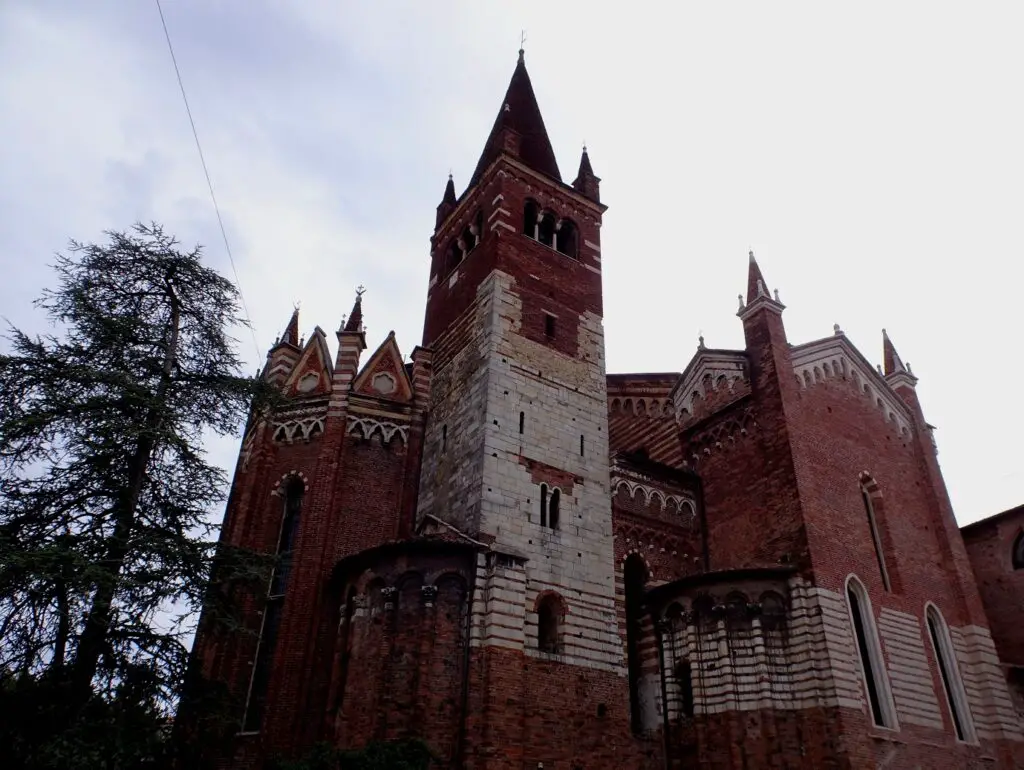
At that time Benedictine Monks decided to construct a new basilica atop the old one. Ostensibly, this was so the dead wouldn’t be disturbed by all this fervent preaching and praying but my theory is that they really just wanted an awesome two-story church so all the other monks would be jealous.
Nowadays, the dimly-lit crypt actually exudes a solemn atmosphere and holds some nicely preserved medieval frescoes on the pillars. The real star attraction is the upper church, though, which is a lot more spacious and features an impressive carved wooden ceiling modelled like a ship’s hull and said to hold painted portraits of more than 400 saints.
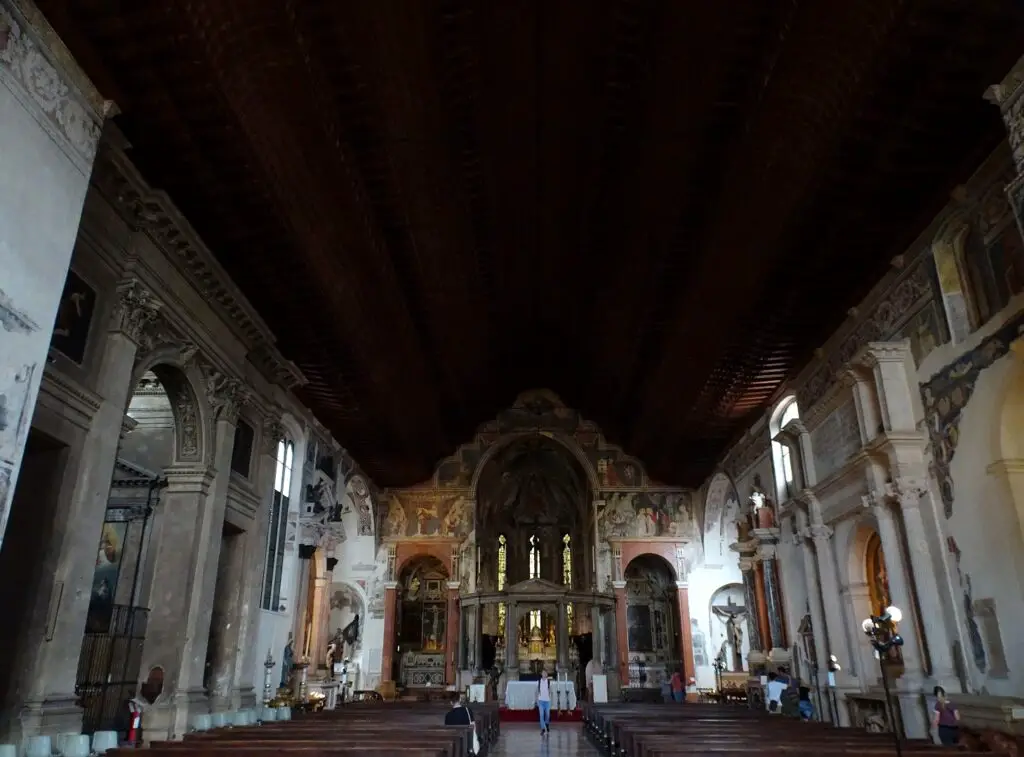
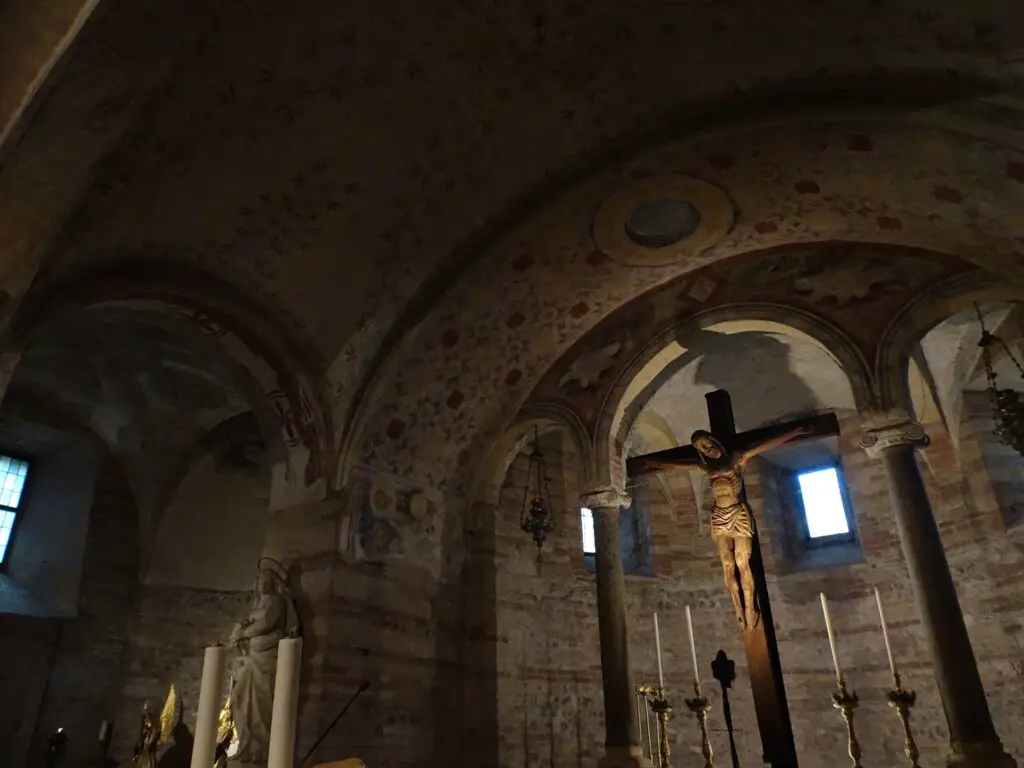
The basilica can be found next to Ponte Navi at the eastern end of the city centre.
San Zeno Maggiore
This basilica doesn’t get as many visitors as the other three churches on the list, as it’s a little further afield at the northeastern edge of the city centre. Those who come here are rewarded with a pretty interior, which seems light and airy despite its massive size, thanks to the red-and-white striped stone used to construct the pillars and walls.
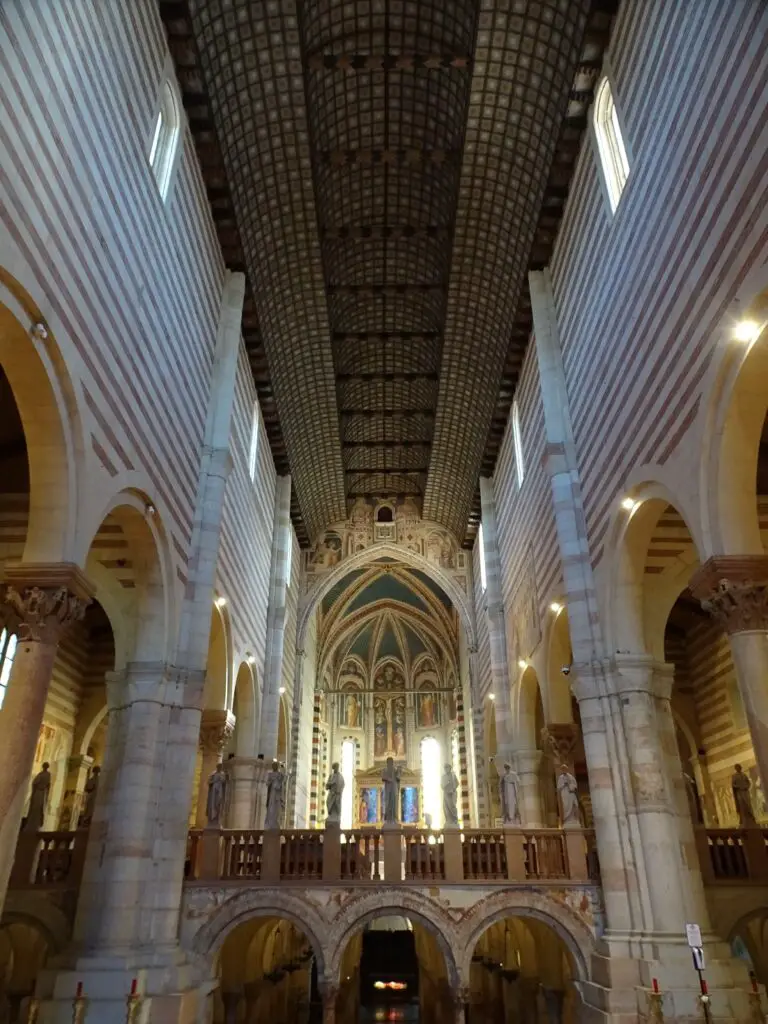
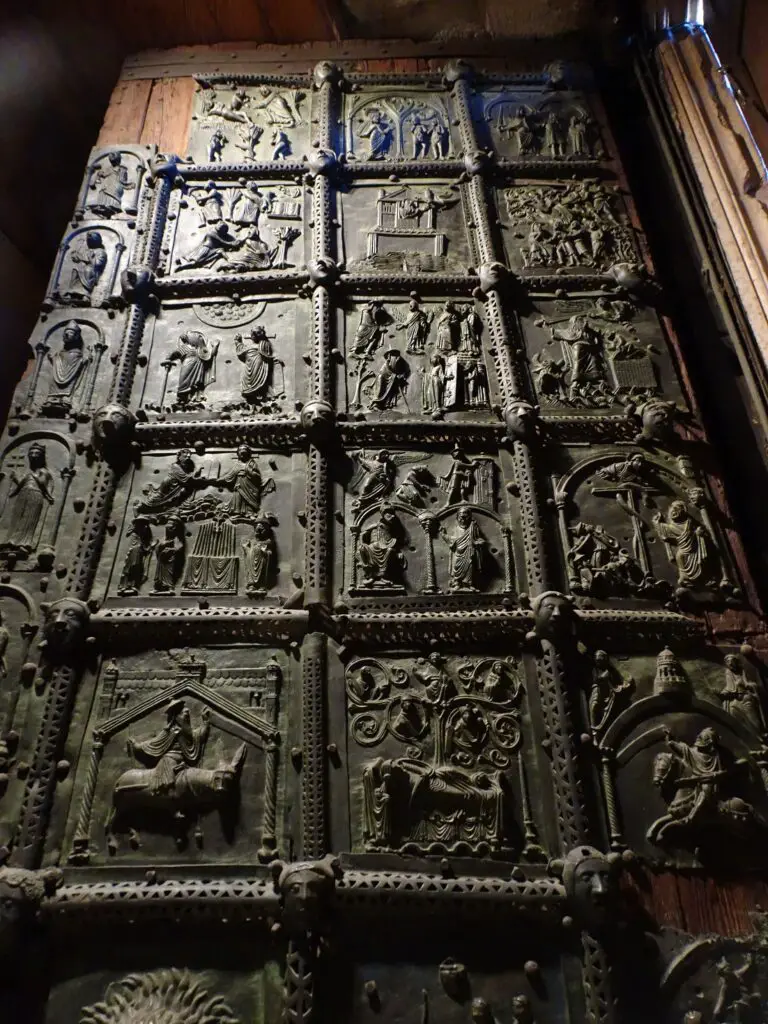
There are a lot of interesting artistic touches, including fresco-covered walls and the main doorway featuring 48 bronze relief-plates with biblical motives (plus, I’m pretty sure I spotted the first ever depiction of stage diving on one of them:).
The crypt holds the remains of San Zeno himself and there’s also a pretty cloister attached to the building, which you’ll walk through before entering the church through a side entrance. Make sure to still have a look at the main portal from the outside, which is framed by some delicately carved marble reliefs.
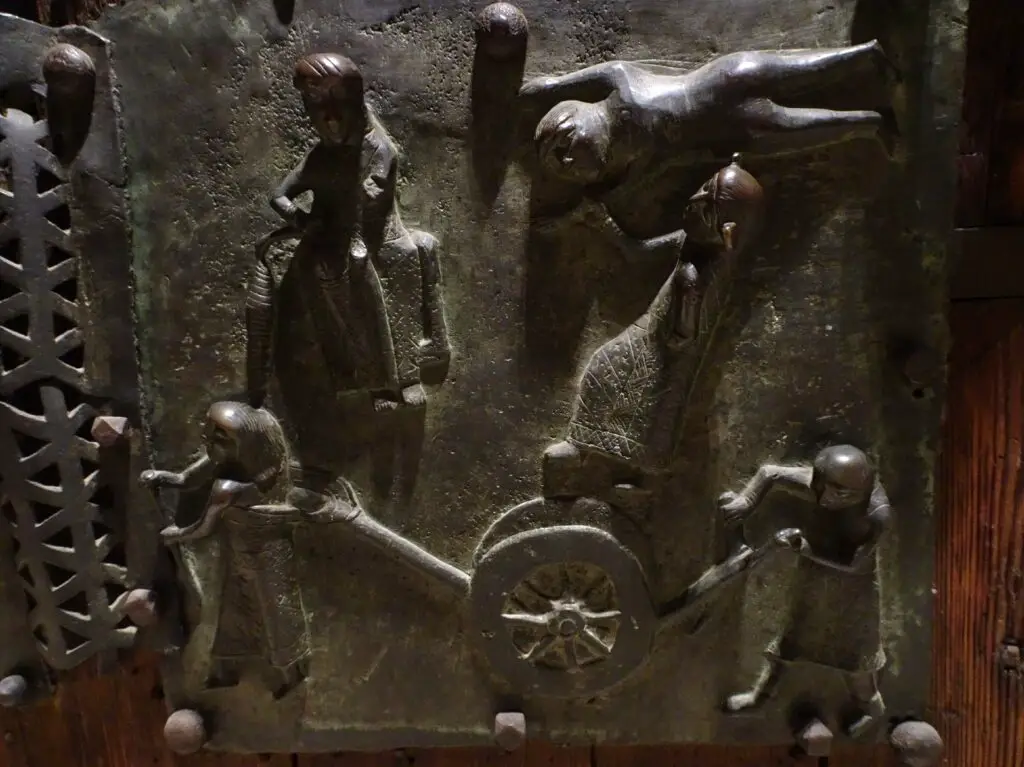
The church is located about 20 minutes by foot north west of the Arena on fittingly-named Piazza San Zeno.
Sant’Anastasia Basilica
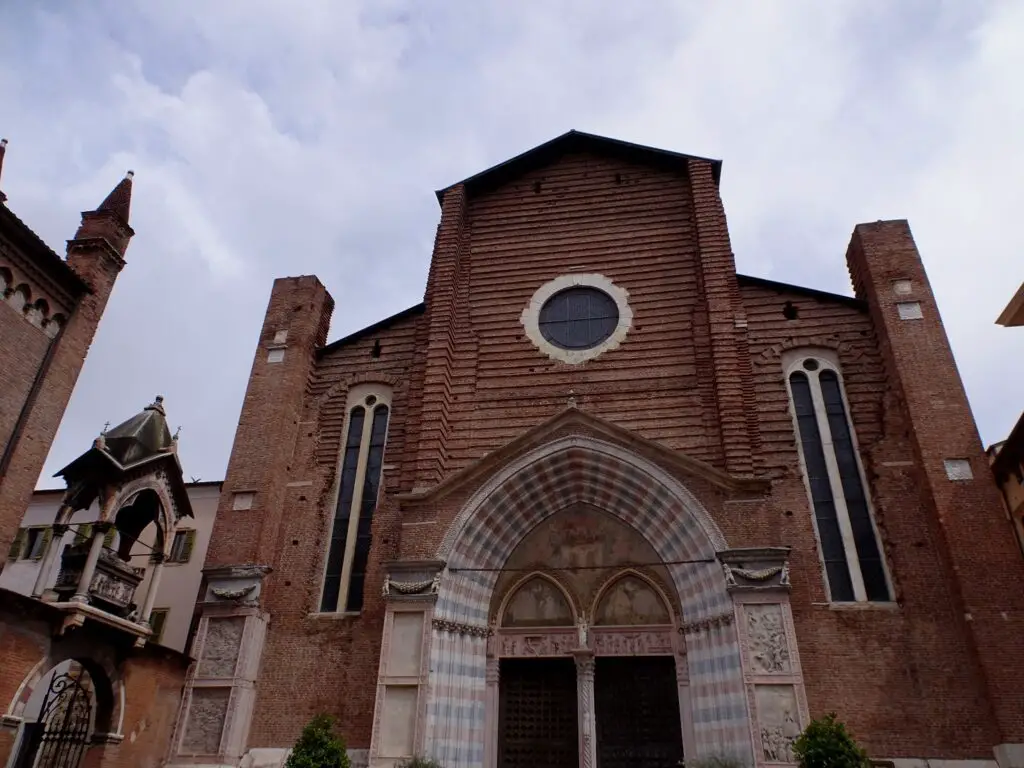
This monumental 14th century church might look rather austere from the outside (except for its multi-colored carved stone gateway) but the light-flooded nave and floral frescoes on the ceiling give its interior an almost incongruous lightness.
The room is dominated by monumental columns made out of locally sourced red Verona Marble and there are some richly decorated chapels along the walls (check out the Capella Cavalli and the Capella Pelligrini, both to the right of the main altar).

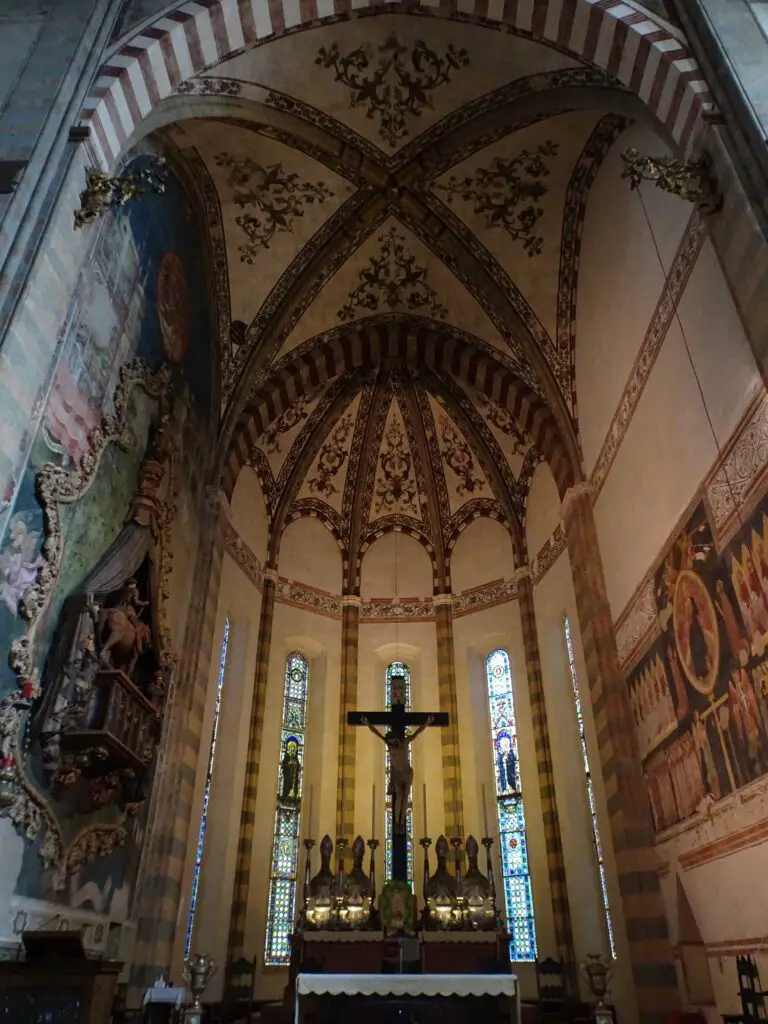
The basilica is located south of the Adige near the northern end of the city centre. While you’re in the area, make sure to also have a look at the picturesque Ponte Pietra Bridge dating to the late Roman Republic, which can be found slightly northwest of the Basilica.
Verona Cathedral
Officially named Santa Maria Matricolare, Verona’s Cathedral is probably the most impressive of the four churches from the outside with its finely-decorated front portal (featuring some griffons that look supremely unhappy with their job of carrying the columns).
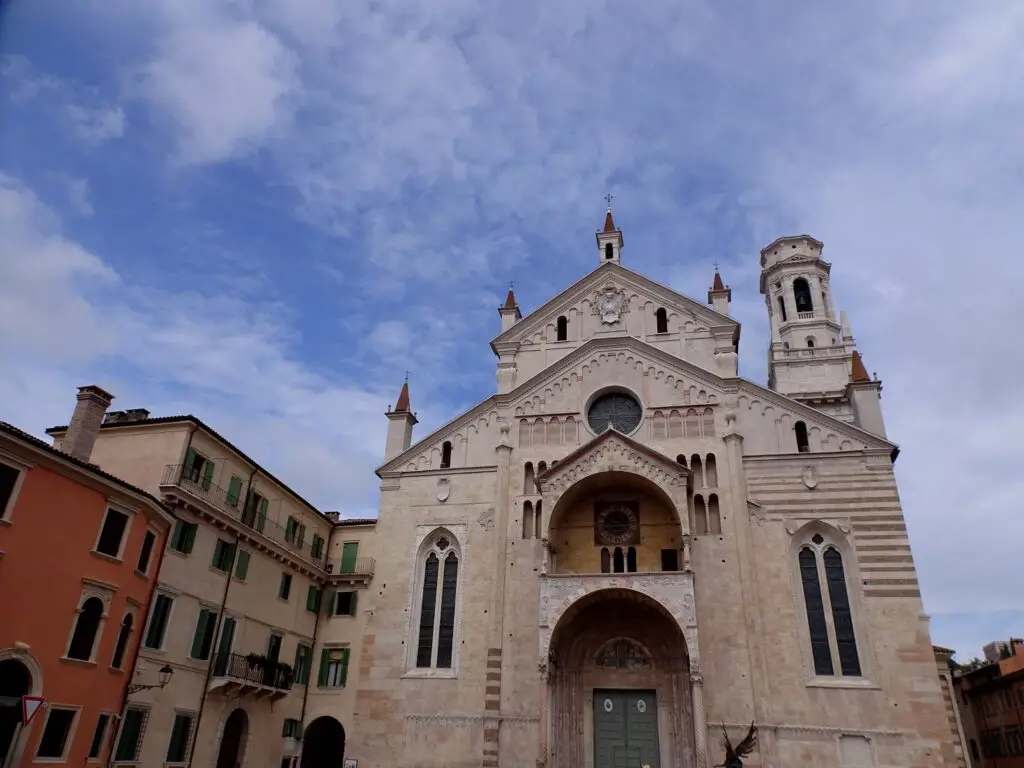
You’ll enter through the back, though, where you’ll encounter both a pretty baptistery (check out the ornate font) and a small subsidiary chapel with some openings in the ground allowing you a glimpse of the foundations of an earlier church.
The cathedral’s main hall is certainly compelling, though arguably less unique than that of the other three churches. The most striking elements are probably the huge pillared semicircle of the marble choir screen and the two gilded organs hanging to both sides of the presbytery.
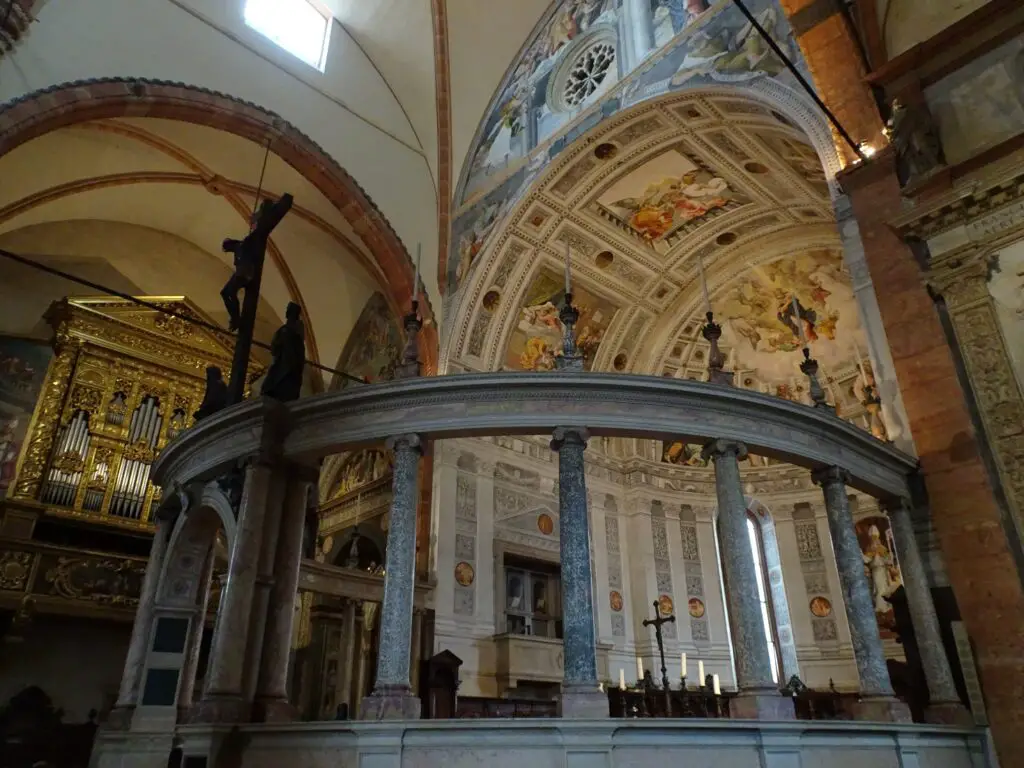
The cathedral can be found in the northernmost part of the city centre south of the Adige
So, which is the best church in Verona?
All four churches I’ve described are worth visiting but if you have limited time or money, I suggest either checking out San Fermo or San Zeno, both of which are quite unique in their own way. San Fermo is closer to the city centre and can easily be combined with other nearby sights like the House of Julia or the Arena.
When to visit the churches
All of the churches can be visited daily, albeit with differing opening times (especially on weekends). Check the opening times on this site. As they’re all pretty big they don’t tend to get crowded too much but obviously they’re more atmospheric in the morning with less people around.
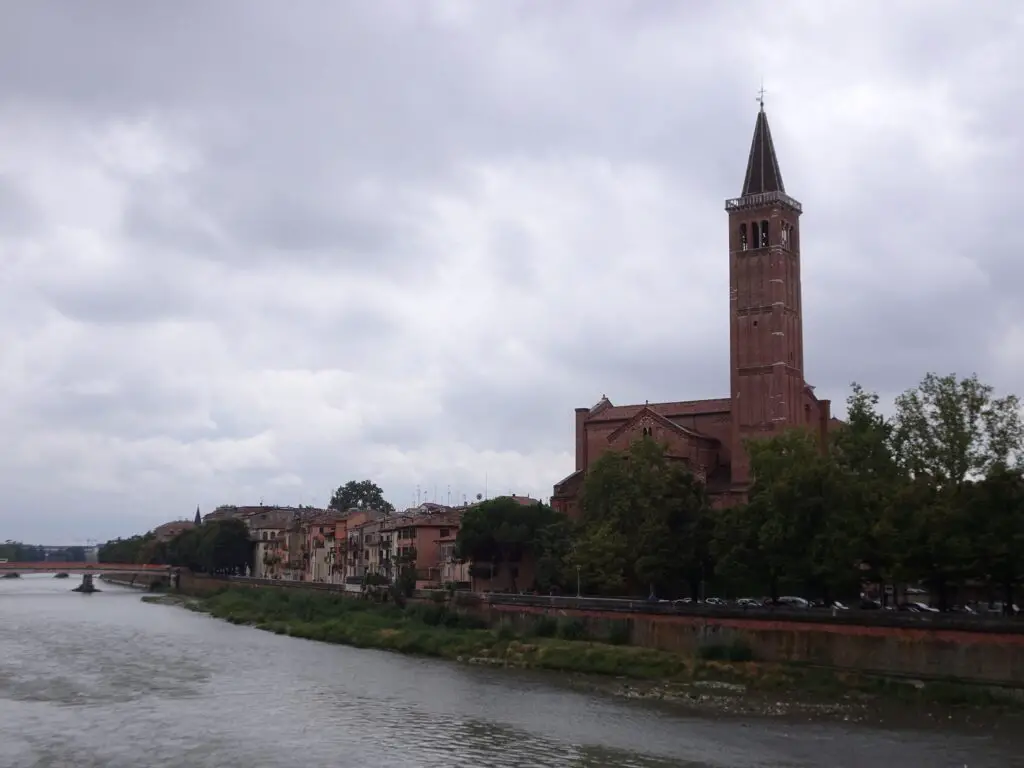
How much is the entrance fee to the churches?
The entrance fee to a single church is 4€ and there’s a combined ticket for all four for 8€.
Map of the churches
All four churches can be found in Verona’s historical centre (i.e. inside the city walls), although San Zeno is a bit further afield. Have a look at this map to see where they are located.
Practicalities
How to get to Verona
As the second-biggest city of the Veneto Region, there are frequent train connections to Verona from all over the region, like Venice (about 1,5 hours/10€), Padua (about 1 hour/8€) or Vicenza (about 40 mins./6€). You can also reach the city from Rome in a little over 3 hours (about 30€). The main train station is Verona Porta Nuova about 25 minutes south of the city centre.
Where to stay in Verona
There are plenty of mid-range as well as some budget options in the city but especially in the summer, you’d be well-advised to book in advance as prices tend to skyrocket. One of the more affordable options would be StraVagante Hostel & Rooms near the Porta Nova Train Station. Have a look at the map above for some other options.
Other things to do in Verona
What to know about visiting the locations from Romeo and Juliet in Verona, Italy
